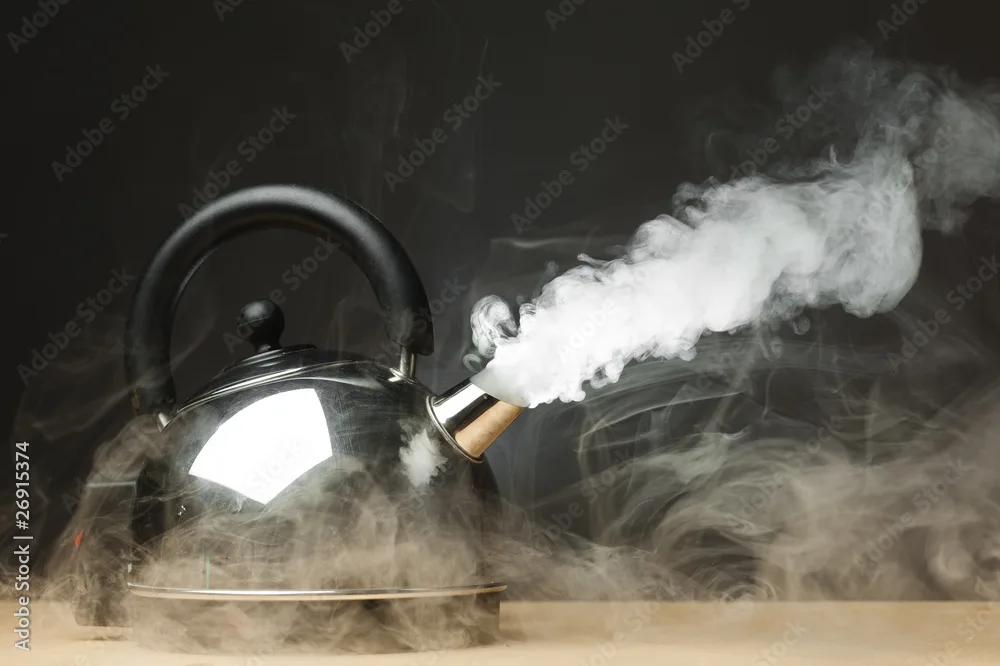Unlocking the Mysteries: Evaporation vs. Boiling
Evaporation and boiling are two common processes that involve the transformation of a substance from a liquid state to a gaseous state. While they both involve the conversion of a liquid into vapor, they differ in several important aspects, including the mechanism, temperature, and energy requirements. In this essay, we will explore the key differences between evaporation and boiling in detail.
Mechanism:
One of the fundamental differences between evaporation and boiling lies in the mechanism by which they occur.
Evaporation is a surface phenomenon that occurs at the interface between a liquid and its surroundings. It happens when the molecules at the liquid’s surface gain enough kinetic energy to break the intermolecular forces holding them in the liquid state and enter the gaseous phase. These molecules then become vapor and mix with the surrounding air. Evaporation can occur at any temperature, but it tends to be a slower process compared to boiling.

Evaporation is a natural process that we encounter in our daily lives. For example, when you leave a glass of water out in the open, the water slowly evaporates over time, leaving the glass partially empty. Similarly, the drying of clothes on a clothesline is a result of the liquid water on the fabric’s surface evaporating into the atmosphere.
Boiling, on the other hand, is a bulk phenomenon that takes place throughout the entire volume of the liquid. It occurs when the entire liquid reaches its boiling point, which is the temperature at which the vapor pressure of the liquid equals the atmospheric pressure. At this point, bubbles of vapor form within the liquid and rise to the surface. Boiling is a rapid and vigorous process compared to evaporation, and it requires a constant supply of heat to maintain.
A common example of boiling is when you heat water on a stove. As the water temperature increases, it eventually reaches its boiling point, and bubbles of water vapor from within the liquid, causing the water to boil.
Temperature:
Another significant difference between evaporation and boiling is the temperature at which they occur.
Evaporation occurs at temperatures below the boiling point of the liquid. It can take place at any temperature, as long as there is a temperature difference between the liquid and its surroundings. Even at room temperature, some molecules at the surface of a liquid have enough kinetic energy to escape into the vapor phase.

Boiling occurs specifically at the boiling point of the liquid. The boiling point is the temperature at which the vapor pressure of the liquid equals the atmospheric pressure. Above this temperature, the liquid turns into vapor throughout its entire volume, and bubbles of vapor are visibly formed. The boiling point varies depending on the substance and the surrounding atmospheric pressure. For example, the boiling point of water at sea level is 100 degrees Celsius, but it decreases with increasing altitude because atmospheric pressure decreases.
Boiling occurs specifically at the boiling point of the liquid. The boiling point is the temperature at which the vapor pressure of the liquid equals the atmospheric pressure. Above this temperature, the liquid turns into vapor throughout its entire volume, and bubbles of vapor are visibly formed. The boiling point varies depending on the substance and the surrounding atmospheric pressure. For example, the boiling point of water at sea level is 100 degrees Celsius (212 degrees Fahrenheit), but it decreases with increasing altitude because atmospheric pressure decreases.
Energy Requirements:
The energy requirements for evaporation and boiling also differ significantly.
Evaporation is an energy-requiring process, but it doesn’t require as much energy as boiling. The energy needed for evaporation comes from the heat in the surroundings. As the liquid molecules absorb heat energy, they gain kinetic energy, and some of some of them can overcome the intermolecular forces holding them in the liquid state, transitioning into the vapor phase. Evaporation is a cooling process because it removes heat from the surrounding environment. This is why sweating cools our bodies; as sweat evaporates from our skin, it takes away heat.
Boiling, on the other hand, is a highly energy-intensive process. To reach the boiling point and maintain the boil, a continuous supply of heat energy is required. energy is used to break the intermolecular forces throughout the entire volume of the liquid, allowing it to turn into vapor. The energy required for boiling is substantial, and it’s typically provided by external heat sources, such as a stove or a kettle. Boiling is a heating process. as it adds heat to the liquid to sustain the phase transition.
On the other hand, is a highly energy-intensive process. To reach the boiling point and maintain the boil, a continuous supply of heat energy is required. This energy is used to break the intermolecular forces throughout the entire volume of the liquid, allowing it to turn into vapor. The energy required for boiling is substantial, and it’s typically provided by external heat sources, such as a stove or a kettle. Boiling is a heating process, as it adds heat to the liquid to sustain the phase transition.
Rate of Vaporization:
The rate at which a liquid transforms into vapor differs between evaporation and boiling.
Evaporation is a relatively slow process. The rate of evaporation depends on various factors, including the temperature, humidity, surface area, and the presence of a breeze. Higher temperatures and lower humidity levels generally lead to faster evaporation. However, it is worth noting that evaporation can take place even in cool or cold conditions, albeit at a slower pace.
Boiling is a rapid process. Once a liquid reaches its boiling point, vaporization occurs vigorously throughout the entire liquid volume, resulting in the formation of bubbles. The rate of boiling is primarily determined by the heat source’s intensity and the characteristics of the liquid, such as its viscosity and initial temperature. Boiling is used in various cooking methods because it allows for quick and efficient heat transfer to the food.
Occurrence in Nature:
Both evaporation and boiling are common phenomena in nature, but they occur in different contexts.
Evaporation is a ubiquitous natural process that occurs in many environmental setting. It plays a crucial role in the water cycle. For example, the sun’s heat causes the evaporation of water from oceans, rivers, and lakes, leading to the formation of water vapor in the atmosphere. This water vapor eventually condenses to form clouds and can later fall as precipitation, replenishing the Earth’s water sources.
Evaporation also occurs in biological systems. Transpiration in plants is a form of evaporation where water is released from plant leaves into the atmosphere through small openings called stomata.
Boiling is less common in natural settings compared to evaporation. While it occur in natural hot springs, geysers, and volcanic environments, it is generally considered a more controlled and less common process in the natural world. Boiling is harnessed and utilized by humans for various purposes, such as cooking, sterilization, and energy production in stem turbines.

Control Evaporation
Evaporation and boiling also differ i terms of how easily they can be controlled and manipulated.
Evaporation is a passive process that occurs naturally when there is temperature difference between the liquid and its surroundings. While it ca be influenced by factors such as temperature, humidity and air movement, it is challenging to control or accelerate significantly without external intervention.
Boiling can be controlled and manipulated more easily. By adjusting the heat source, the intensity of boiling can be increased or decreased. This control is frequently used in cooking to achieve specific temperature ranges and cooking times. The controlled boiling of water is also employed in many industrial processes, including power generation and manufacturing.
In conclusion, evaporation and boiling are two distinct processes that involve the transformation of a liquid into vapor state, but they differ in terms of mechanism, temperature, energy requirements, rate of vaporization, occurrence in nature, and control. Evaporation is a surface phenomenon that occurs at temperatures below the boiling point and is influenced by factors like temperature ad humidity. Boiling, on the other hand, is a bulk phenomenon that occurs at the boiling point of the liquid and requires a constant supply of heat. Understanding these differences is crucial for various applications, from cooking and industrial processes to understanding natural phenomena like water cycle.

